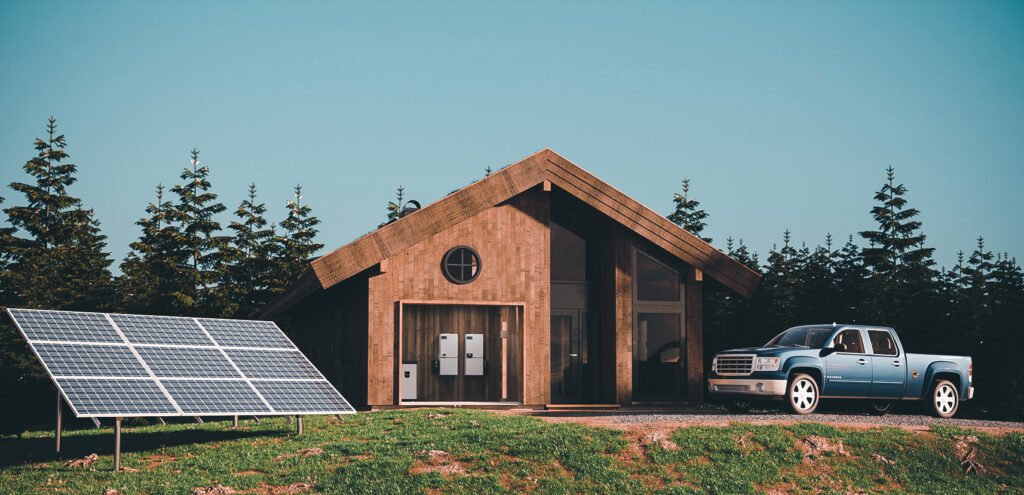Introduction
Off-grid living, powered by solar energy, has become an increasingly popular choice for those seeking independence from traditional utility services and a more sustainable lifestyle. Solar power offers a reliable and environmentally friendly source of energy that can meet the diverse needs of off-grid living, from powering homes to running appliances and even charging electric vehicles. However, before making the switch to solar power for off-grid living, there are several key considerations you should keep in mind to ensure a successful and efficient setup.
Location and Solar Resource Assessment
The first step in transitioning to off-grid solar power is to evaluate your location’s solar resource potential. Solar panels require sunlight to generate electricity, so it’s crucial to assess the following factors:
- Solar Insolation: This term refers to the amount of sunlight your location receives throughout the year. Solar panels are most effective in areas with high insolation.
- Shading: Ensure that your chosen installation site is free from shading obstacles like trees, buildings, or other structures. Even partial shading can significantly reduce solar panel efficiency.
- Tilt and Orientation: Installing solar panels at the correct tilt and orientation towards the sun can maximize energy generation. The optimal angle will depend on your latitude.
- Climate and Weather Conditions: Consider your region’s climate and weather patterns to plan for seasonal variations in sunlight. Snow and dirt accumulation on panels can affect performance.
- Energy Consumption Analysis
Understanding your energy consumption patterns is crucial for sizing your solar power system correctly. Start by assessing:
- Historical Energy Usage: Review past utility bills to determine your average monthly and annual electricity consumption.
- Load Assessment: Make a list of all the appliances and devices you intend to power with solar energy. Note their power ratings and daily usage hours.
- Efficiency Measures: Implement energy-efficient practices and upgrade appliances to reduce your energy demand. This can lead to a smaller and more cost-effective solar system.
- System Sizing and Component Selection
Once you have a clear picture of your energy needs, it’s time to size your solar power system and choose the necessary components:
- Solar Panels: Select high-quality, efficient solar panels that match your energy requirements. Consider monocrystalline or polycrystalline panels based on your budget and space constraints.
- Inverter: Choose an inverter that can convert the DC electricity generated by solar panels into usable AC electricity for your home. Options include string inverters, micro inverters, and power optimizers.
- Battery Storage: If you plan to have a backup power source for night-time or cloudy days, invest in a battery storage system like lithium-ion batteries. Sizing should align with your energy storage needs.
- Charge Controller: If you’re using batteries, a charge controller is essential to prevent overcharging and extend battery life.
- Mounting and Racking: Consider the type of mounting and racking system that suits your installation site, whether it’s ground-mounted, roof-mounted, or pole-mounted.
- Budget and Financial Planning
Installing an off-grid solar power system can be a significant upfront investment. Create a detailed budget that includes the cost of solar panels, inverters, batteries, installation, and ongoing maintenance. Explore available incentives, tax credits, and financing options to offset costs and improve your return on investment.
- Maintenance and Monitoring
Proper maintenance is crucial to ensure your off-grid solar power system operates efficiently over its lifespan, which can be 20 years or more. Consider the following maintenance tasks:
- Regular Cleaning: Keep solar panels clean to maximize energy production. Cleaning schedules will vary based on local conditions.
- Battery Maintenance: If you have a battery system, check and maintain it according to the manufacturer’s recommendations.
- System Monitoring: Invest in a monitoring system to track your system’s performance and detect any issues promptly.
- Compliance and Permits
Check local regulations, building codes, and permit requirements before installing your off-grid solar power system. Some areas may have specific rules regarding system size, installation, and safety standards.
- Backup Power and Generator
For uninterrupted power during extended periods of low sunlight or system maintenance, consider a backup power source such as a generator or a backup generator. This ensures a reliable energy supply when needed most.
- Sustainability and Environmental Impact
Off-grid living is often motivated by a desire for sustainability. Ensure your solar power system aligns with this goal by choosing environmentally friendly components and recycling or disposing of old equipment responsibly.
- Training and Knowledge
Finally, invest time in understanding how your off-grid solar power system works. Consider attending training sessions or workshops to learn about system maintenance, troubleshooting, and optimization.
Conclusion
In conclusion, transitioning to off-grid living with solar power offers numerous benefits, including energy independence and reduced environmental impact. However, it requires careful planning, proper sizing, and ongoing maintenance to ensure a reliable and efficient energy supply. By considering these key factors, you can successfully harness the power of the sun for off-grid living.


